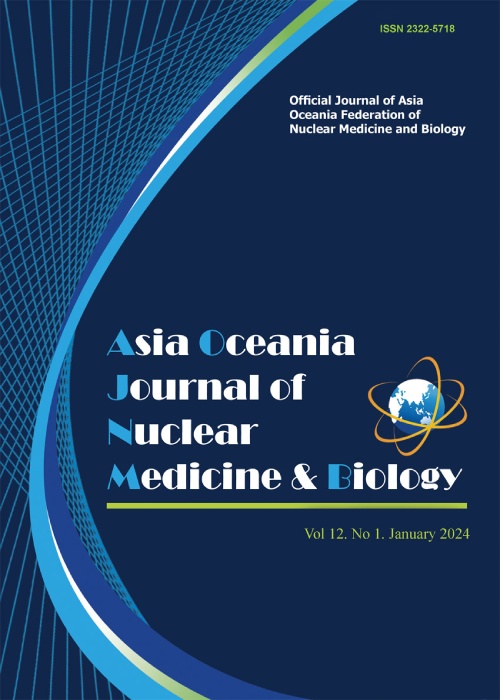Rapid predictive dosimetry for Second Strike prescription based on whole body radioiodine kinetics in differentiated thyroid cancer
Author(s):
Article Type:
Research/Original Article (دارای رتبه معتبر)
Abstract:
Objective(s)
In systemic radionuclide therapy such as radioiodine (I-131) for differentiated thyroid cancer, post-therapy dosimetry is essential to verify pre-therapy predictions, which in turn informs the next treatment. However, post-therapy multi-time point dosimetry is resource intensive and unfeasible in many institutions. We devised a schema of rapid predictive dosimetry by circumventing post-First Strike multi-time point dosimetry with carefully assigned gestalt values of predicted kinetics to personalise the Second Strike prescription.Methods
Verification is performed after the First Strike. Patient-specific time-activity curve is plotted from serial measurements of whole body exposure rates to obtain its decay constant; its inverse is the whole body Time Integrated Activity Coefficient (TIAC). The percentage of whole body TIAC attributed to blood is carefully assigned by gestalt based on population kinetics tabulated in Part 1, adjusted by any metastasis on I-131 whole body scintigraphy. Marrow absorbed dose is calculated by EANM formularism. Lung safety threshold at 48h post-therapy is linearly scaled by height, where the patient’s risk of lung radiotoxicity is revealed from the whole body time-activity curve value at 48h. Predictive prescription for the second I-131 fraction (Second Strike) is by careful gestalt assessment based on predicted kinetics, remaining marrow and lung tolerance, marrow dose rate constraint per fraction (0.265 Gy/h), local regulatory and facility requirements in relation to radiation protection. Tumour dosimetry is obviated under the assumption of severe tumour absorbed dose heterogeneity. The final prescription for the Second Strike is usually the lowest I-131 activity amongst all clinical, dosimetric and regulatory constraints.Results
This schema is incorporated into a Predictive Calculator spreadsheet for rapid predictive dosimetry, and is freely available. Calculations may be completed within minutes to generate personalised predictive prescriptions, making it feasible for routine clinical implementation.Conclusion
Our innovative schema of rapid verification and predictive dosimetry bridges the technological gap between empiric vs theranostic prescription to help institutions modernise. Its expeditious design makes this schema feasible to be integrated into the routine clinical workflow. Its predictive estimates provide invaluable dosimetric insight to inform the next I-131 fraction, allowing every prescription to be scientifically rationalised and personalised according to individual circumstances.Keywords:
Language:
English
Published:
Asia Oceania Journal of Nuclear Medicine & Biology, Volume:12 Issue: 1, Winter and Spring 2024
Pages:
37 to 42
https://magiran.com/p2663446
دانلود و مطالعه متن این مقاله با یکی از روشهای زیر امکان پذیر است:
اشتراک شخصی
با عضویت و پرداخت آنلاین حق اشتراک یکساله به مبلغ 1,390,000ريال میتوانید 70 عنوان مطلب دانلود کنید!
اشتراک سازمانی
به کتابخانه دانشگاه یا محل کار خود پیشنهاد کنید تا اشتراک سازمانی این پایگاه را برای دسترسی نامحدود همه کاربران به متن مطالب تهیه نمایند!
توجه!
- حق عضویت دریافتی صرف حمایت از نشریات عضو و نگهداری، تکمیل و توسعه مگیران میشود.
- پرداخت حق اشتراک و دانلود مقالات اجازه بازنشر آن در سایر رسانههای چاپی و دیجیتال را به کاربر نمیدهد.
In order to view content subscription is required
Personal subscription
Subscribe magiran.com for 70 € euros via PayPal and download 70 articles during a year.
Organization subscription
Please contact us to subscribe your university or library for unlimited access!


